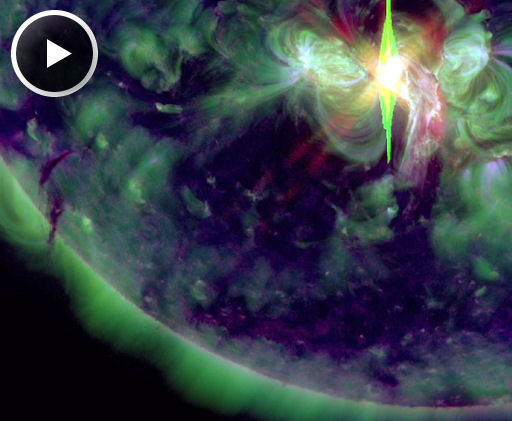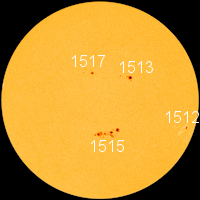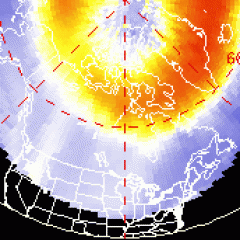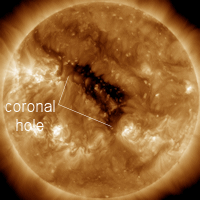~SPace Weather Update~ Still Harboring MClass Flares~ [1]
ALMOST X-FLARE: Big sunspot AR1515 erupted on July 2nd at 10:52 UT, producing an M5.6-class solar flare that almost crossed the threshold into X-territory [2]. NASA's Solar Dynamics Observatory recorded the extreme ultraviolet flash:
A pulse of x-rays and UV radiation from the flare illuminated Earth's upper atmosphere, producing waves of ionization over Europe. Such waves alter the propagation of low-frequency radio transmissions. In Lofoten, Norway, Rob Stammes recorded the ionospheric disturbance using a 60 kHz receiver: data [4].
The eruption also hurled a CME into space, but not directly toward Earth. The south-traveling cloud [5] could deliver a glancing blow to our planet's magnetosphere on July 4th or 5th. Stay tuned for updates. [SDO movie [3]]
Realtime Space Weather Photo Gallery [6]
BIG SUNSPOTS: The solar disk is peppered with sunspots so large onlookers are seeing them with the naked eye. Earlier today, the clouds over Paris, France, acted as a natural solar filter to reveal active regions AR1513 and AR1515:
VegaStar Carpentier took the picture using an off-the-shelf Canon EOS 1000D digital camera set at ISO 100 for 1/80 of a second. Photographers, take note of those settings because the sunspots should remain large and obvious for at least a few more days. (Caution: Do not look at the unfiltered sun through camera optics because focused sunlight can damage your eyes. Use the LCD viewscreen for pointing.)
The sunspots are also showing up in sunrises [8] and sunsets [9] around the world. Browse the Realtime SpaceWeather Photo Gallery [10] for more examples.

![]()
Solar wind
speed: 523.9 km/sec
density: 1.6 protons/cm3
explanation [11] | more data [12]
Updated: Today at 1455 UT
![]()
X-ray Solar Flares
6-hr max: C4 1359 UT Jul03
24-hr: M1 0000 UT Jul03
explanation [13] | more data [14]
Updated: Today at: 1400 UT
![]()
![]()
![]()
Daily Sun: 03 Jul 12
![]()
![]()
Sunspots 1513 and 1515 have 'beta-gamma' magnetic fields that harbor energy for M-class [2] solar flares. Credit: SDO/HMI
![]()
![]()
![]()
Sunspot number: 165
What is the sunspot number? [16]
Updated 03 Jul 2012
Spotless Days
Current Stretch: 0 days
2012 total: 0 days (0%)
2011 total: 2 days (<1%)
2010 total: 51 days (14%)
2009 total: 260 days (71%)
Since 2004: 821 days
Typical Solar Min: 486 days
Updated 03 Jul 2012
The Radio Sun
10.7 cm flux: 166 sfu
explanation [17] | more data [18]
Updated 03 Jul 2012
![]()
![]()
![]()
Current Auroral Oval:
![]()
Switch to: Europe, USA, New Zealand, Antarctica
Credit: NOAA/POES
![]()
![]()
![]()
Planetary K-index
Now: Kp= 2 quiet
24-hr max: Kp= 3 quiet
explanation [20] | more data [21]
![]()
Interplanetary Mag. Field
Btotal: 3.8 nT
Bz: -0.0 nT
explanation [22] | more data [23]
Updated: Today at 1456 UT
![]()
![]()
![]()
Coronal Holes: 30 Jun 12
![]()
![]()
Solar wind flowing from this coronal hole should reach Earth on July 2-3. Credit: SDO/AIA.




